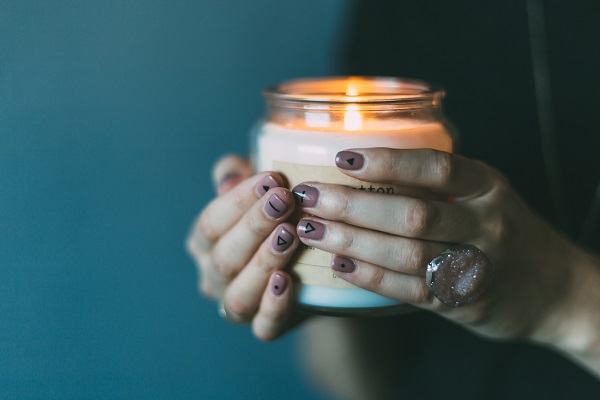Did you know we fill our pillows, couches, and beds with plastic plus chemicals that off-gas, and soak it all in formaldehyde? That’s gotta stop. Let’s value simple materials that protect our health—our lives—our ability to be of benefit. Some of them cost more, some of them cost less. All of them save us and our loved ones and planet unnecessary yuckiness and future healthcare costs. ~ Waylon Lewis, ed.
More than 90 percent of the world’s population lives in a place where the outdoor air quality is harmful to human health, according to the World Health Organization (WHO).
While that statistic is pretty darn scary, the fact that the Environmental Protection Agency says the air inside our homes and businesses is five times more polluted than that of the outdoors really gives pause for thought.
While it’s hard for us as individuals to control what’s in the air we breathe outside, we can certainly take control of the air quality in our homes.
Children are at especially high risk from indoor air pollution, which has been linked to several childhood respiratory issues and doubles the risk for childhood pneumonia. According to WHO, half of the deaths among children under 5 years old related to lower respiratory infections can be directly linked to “particulate matter” present in indoor air pollution (primarily from household solid fuels).
Two of the biggest contributors to indoor air pollution are the burning of fossil fuels (like stoves, fireplaces, and candles) and the off-gassing of Volatile Organic Compounds (chemicals released into the air when we bring products into our home that contain them). Over the last 50 years, somewhere between 70,000 to 100,000 different chemicals have been introduced into the world market, making it increasingly more difficult to keep a handle on what we are breathing in.
As the mother of two young children, this research compelled me to scour my house for potential pollutants and root out as many as I could.
I discovered it’s practically impossible to get rid of everything that might be off-gassing—unless I wanted to rip out my insulation and pull up my hardwood floors! But, there are a handful of easy changes we can make that will cut down on the dangers lurking in the air we breathe.
Here are the seven things I banned from my home:
1. Chemical-based household cleaners.
Especially those containing any of the five chemicals the Environmental Working Group recommends you steer clear of:
>> Quaternary ammonium compounds
>> Sodium hypochlorite
>> Ethylene oxide
>> 1,4-Dioxane
>> Isothiazolinone
These are linked to asthma, respiratory infections, skin allergies, and even cancer. There are so many great, natural alternatives for cleaning your home—from vinegar to baking soda to lemon juice—that are both less expensive and better for you.
2. Aerosol-based hairspray and deodorant.
These contain VOCs, which are found in thousands of products and include a variety of chemicals, many of which have been shown to have negative short and long-term health effects. The EPA found concentrations of many VOCs are up to 10 times higher indoors than outdoors.
3. Air fresheners containing “fragrance.”
The FDA doesn’t require manufacturers to list the chemicals included in fragrance additives, meaning if you see the label on a product, it probably contains VOCs that can produce formaldehyde in your home. This is a particularly nasty chemical that can cause difficulty breathing and asthma attacks among other issues. It is also a known carcinogen.
4. Paraffin wax candles.
This EPA report found paraffin wax candles, as well as incense, release small amounts of VOCs when burned. Scented candles also produce more soot which contains tiny particulate matter that is easily inhaled and a major irritant. Beeswax, soy, and palm-based candles are better alternatives—although anything you burn in your home generates soot.
Consider an essential oil diffuser as an alternative fragrance booster, but avoid essential oils containing terpenes, which can produce formaldehyde.
5. Synthetic carpets.
Many synthetic carpets are made with glues and plastics that off-gas from toxic chemicals, such as formaldehyde and other VOCs. Instead, consider natural materials for your carpets, such as wool and jute.
6. Cosmetics containing phthalates.
Found in shampoos, perfumes, and similar products, phthalates are hormone-like chemicals linked to reproductive and developmental problems in animals. They’ve been banned in toys for younger children in some states.
7. Air filters that are three months old—or older.
The best way to combat indoor air pollution is to filter your air. If you have any sort of heating or cooling system, it is already doing that for you. But if you don’t change out your air filters every 90 days, you are at risk of simply just recirculating the dust mites, pollen, and other small particles the filter has trapped that cause indoor air pollution.
Pop in fresh air filters and your system will be able to do a lot of the hard work of cleaning your air for you.
By taking a closer look at the products you use in your home, you can ensure you’re promoting a safe, healthy environment for yourself and your family.
References:
>> World Health Organization: “Household air pollution and health.”
>> Environmental Working Group: “Cleaning Supplies and Your Health.”
~










Read 16 comments and reply